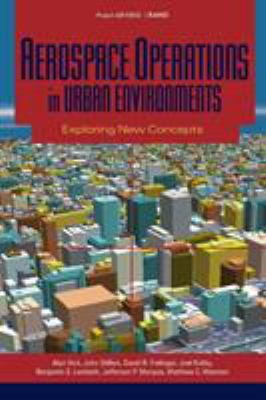
e-Book
|
Aerospace operations in urban environments : exploring new concepts
Copies
0 Total copies, 0 Copies are in,
0 Copies are out.
Title
Aerospace operations in urban environments : exploring new concepts
Call No
U167.5.S7
Digital Link
Authors
Language
English
Published
Santa Monica, CA : Rand, ©2000.
Publication Desc
1 online resource (xxix, 285 p.) : ill.
ISBN
0833028510









